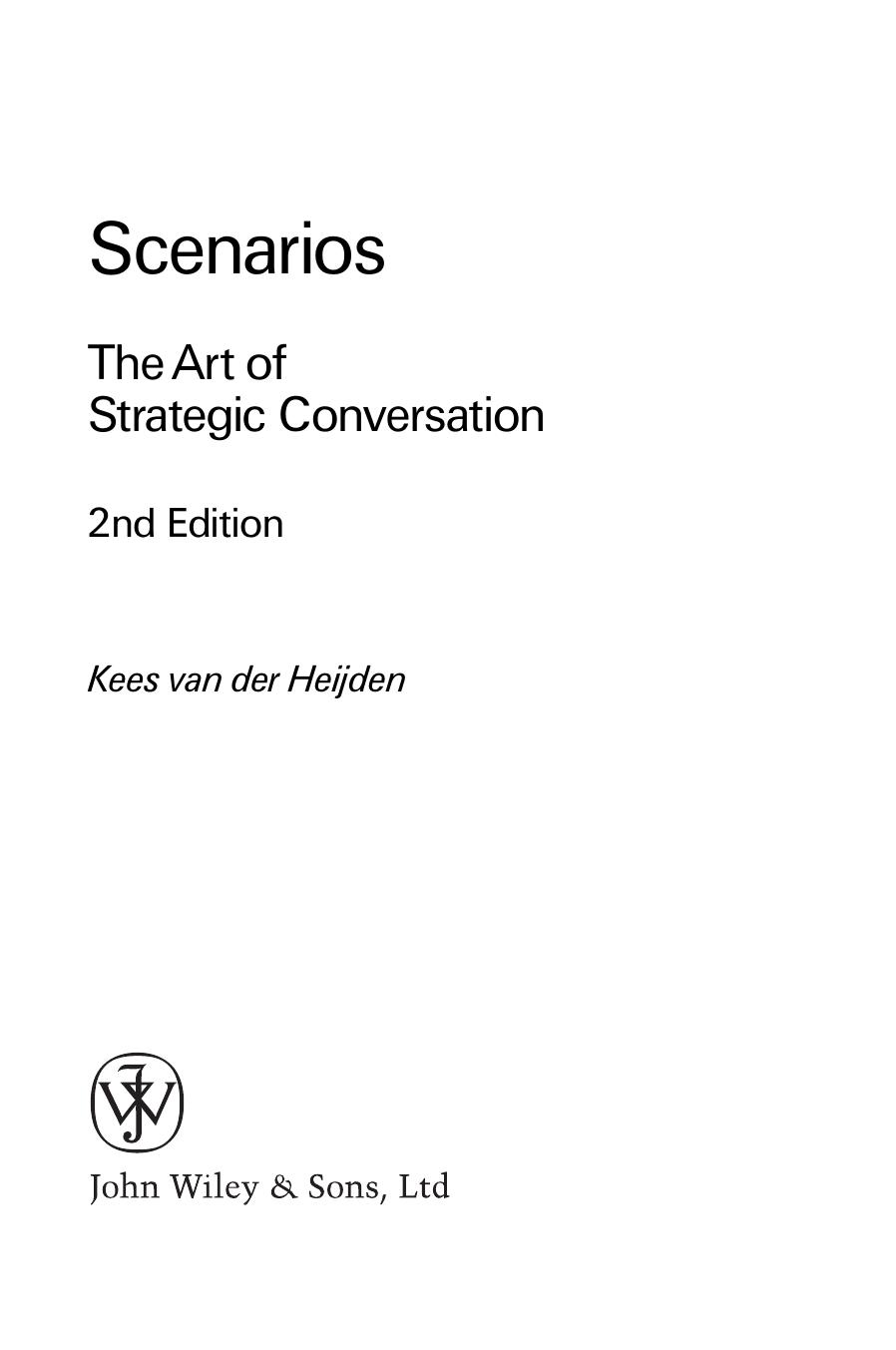Scenarios: The Art of Strategic Conversation by Kees van der Heijden

Author:Kees van der Heijden [van der Heijden, Kees]
Language: eng
Format: mobi, pdf
Publisher: Wiley
Published: 2011-03-09T14:00:00+00:00
SETTING THE AGENDA
The business environment is very large. How to select where to look? This is the first crucial decision to be addressed in the scenario project. The most important stipulation here is the imperative that the work remains relevant to the client. Under no condition must the facilitator “lose” the client on the way. This means that a very clear picture must be obtained of what is strategically important to the client, as the starting point of the project. Any new idea must address these basic needs of the decision makers, if they are to make any impact.
How to surface and articulate the current strategic agenda? The assumption here is that each successful organisation is a manifestation of a formula for success, which we have called a “Business Idea”. Sometimes managers may be able to articulate this in some degree of detail, more often it remains tacit in the background while people go about their daily activities, confident in the experience that what they are doing seems to “work”. Even in situations where the Business Idea remains in the background managers use it intuitively to prioritise actions. Their thoughts, worries and anxieties are manifestations of a discrepancy between such a tacit Business Idea and perceived reality. By discussing these concerns elements of the manager’s Business Idea will emerge. Therefore an agenda for the scenario-based planning exercise can be developed by asking business leaders to express concerns and anxieties about the future. Through a process of discussion an agenda may be developed of issues that managers intuitively feel to be important to the future success of the organisation, on which the scenarios are to throw new light.
As suggested earlier, it is advisable for facilitators to develop an explicit representation of the underlying Business Idea of the organisation, based on the views expressed by the managers. If the process of scenario-based planning is to lead towards reasoned rather than intuitive conclusions concerning the future health of the organisation this step becomes essential.
Download
Scenarios: The Art of Strategic Conversation by Kees van der Heijden.pdf
This site does not store any files on its server. We only index and link to content provided by other sites. Please contact the content providers to delete copyright contents if any and email us, we'll remove relevant links or contents immediately.
Hit Refresh by Satya Nadella(8854)
The Compound Effect by Darren Hardy(8512)
Change Your Questions, Change Your Life by Marilee Adams(7374)
Nudge - Improving Decisions about Health, Wealth, and Happiness by Thaler Sunstein(7242)
The Black Swan by Nassim Nicholas Taleb(6767)
Deep Work by Cal Newport(6563)
Daring Greatly by Brene Brown(6225)
Rich Dad Poor Dad by Robert T. Kiyosaki(6176)
Principles: Life and Work by Ray Dalio(5961)
Man-made Catastrophes and Risk Information Concealment by Dmitry Chernov & Didier Sornette(5649)
Playing to Win_ How Strategy Really Works by A.G. Lafley & Roger L. Martin(5502)
Digital Minimalism by Cal Newport;(5389)
Big Magic: Creative Living Beyond Fear by Elizabeth Gilbert(5352)
The Myth of the Strong Leader by Archie Brown(5238)
The Slight Edge by Jeff Olson(5200)
Discipline Equals Freedom by Jocko Willink(5157)
The Motivation Myth by Jeff Haden(5004)
Stone's Rules by Roger Stone(4857)
The Laws of Human Nature by Robert Greene(4773)
